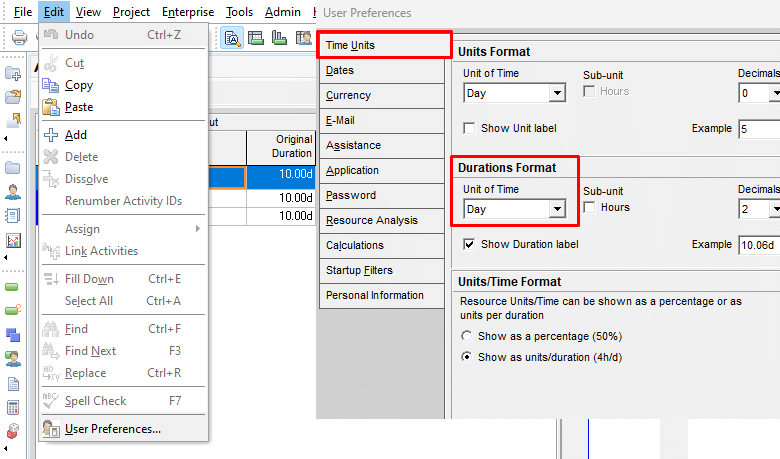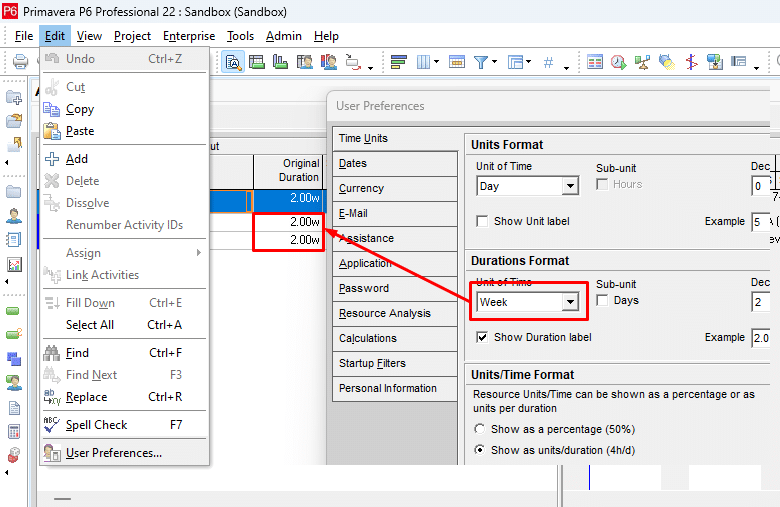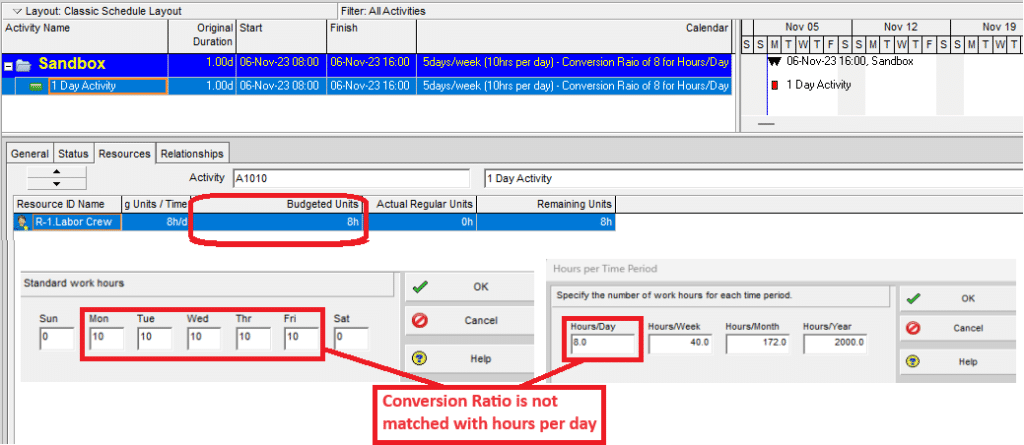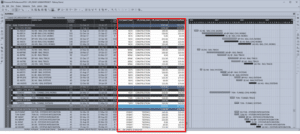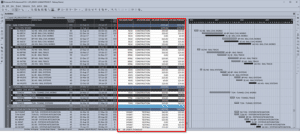By: Mehdi Takabi
Introduction
Have you ever been intrigued by how Primavera P6 operates concerning activity durations or start/finish dates when altering activity calendars, particularly when adjusting the working hours? Activity durations are often input in days, but changing the activity’s calendar can unexpectedly influence the dates and durations of these activities. Let’s delve into how this software behaves and why these changes occur through a simple scenario.
Consider an activity with a 10-day duration assigned to a calendar with 5 working days per week and 8 hours per day.
Afterward, altering the activity calendar to a 10-hour workday with 5 working days per week, you might expect the finish date to remain the same without altering the activity’s duration. However, P6 shows a new finish date. To illustrate this, we added a new activity with the same duration but on a modified calendar. This calendar mirrors the original one, except it features a 10-hour workday instead of the standard 8-hour workday.
Understanding P6 Engine
Primavera P6 functions based on hours as the standard unit of time. Regardless of whether activity durations are initially entered in days, weeks, or months, P6 internally converts these to hours for its calculations. For users, the software simply displays these durations in the selected time units, such as days, weeks, or months, depending on the ‘User Preferences’ settings.
When changing the time unit to ‘weeks’ in our previous scenario, P6 converts the stored hours to weeks, displaying a duration of 2 weeks.
Similarly, switching to the ‘hours’ display reveals the duration of the activity as 80 hours.
Conversion Ratio of Calendars:
The conversion ratio within P6 defines representations of various time periods in hours and is crucial for accuracy in scheduling. Users set these conversion ratios when creating or modifying calendars by accessing the ‘Time Period’ button in the calendar settings.
It is essential to ensure the alignment between the Hour/Day conversion ratio and the working hours per day set via the ‘Workweek…’ button for precise date and duration calculations.
While the standard practice for most project managers is to input activity durations in days, the use of weeks, months, or years as units for activity lengths is infrequent. Consequently, the accuracy of hours per week, month, or year within the ‘Time Period’ settings becomes less critical unless these specific units are employed.
Impact on Activity Durations:
In the scenario, P6 initially stored a duration of 80 hours based on the original calendar with an Hour/Day conversion ratio of 8.
When adjusting the conversion ratio to 10 to align with the altered working hours, P6 recalculates the duration from 10 to 8 days.
Effect on Resource Assignments:
The implications of this mismatch extend to resource assignments. The hours budgeted for assigned resources are calculated based on the conversion ratio from the calendar, not the specific workweek hours, which can lead to discrepancies in resource allocation.
For instance, using a 10 hours per day calendar with an Hour/Day conversion ratio of 8 for an activity with a 1-day duration results in the assignment of 8 hours instead of the intended 10.
Conclusion
Understanding how Primavera P6 interprets and manages time is fundamental for accurate scheduling and resource allocation in project management. The software’s reliance on hours as its core unit of time necessitates meticulous configuration of conversion ratios within the calendars to ensure consistency between displayed durations and actual work hours. Project managers and schedulers should pay close attention to these settings to avoid discrepancies in activity durations, dates, and resource allocations. Achieving alignment between the conversion ratio and working hours is key to maintaining accuracy and reliability within Primavera P6.



